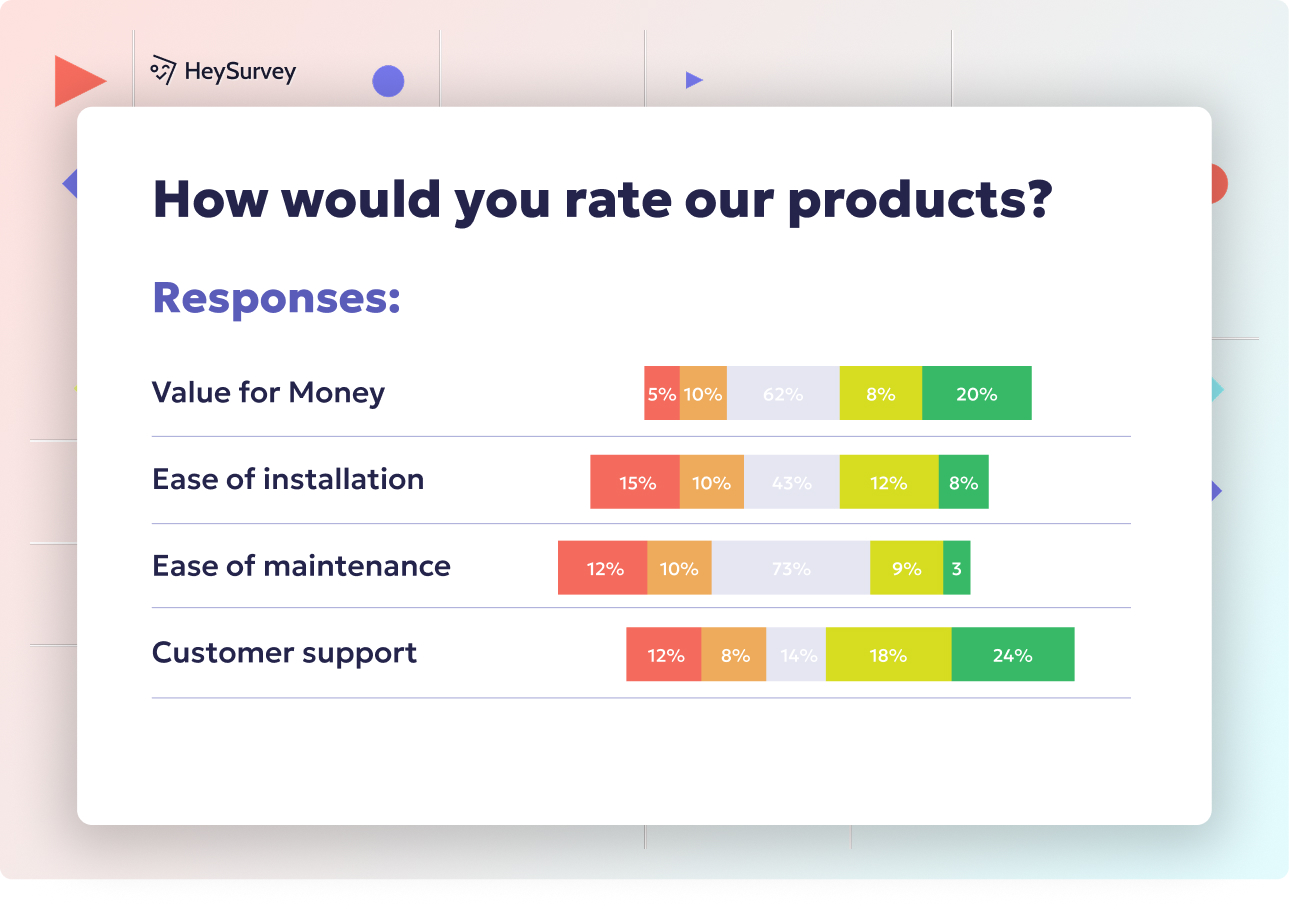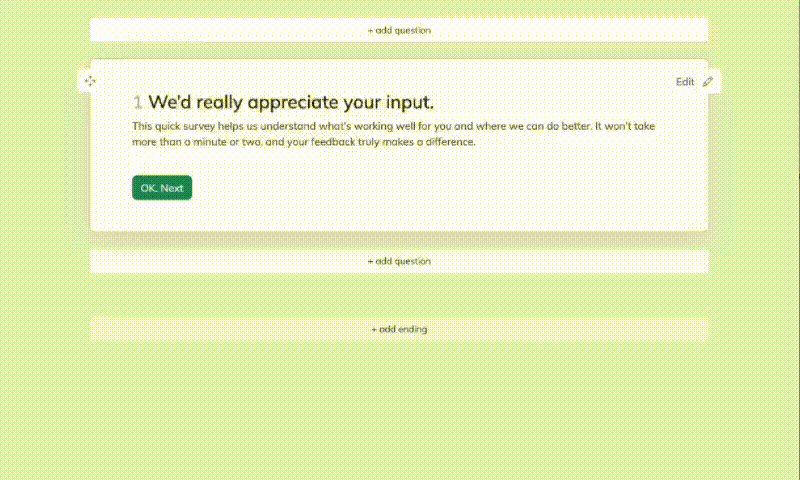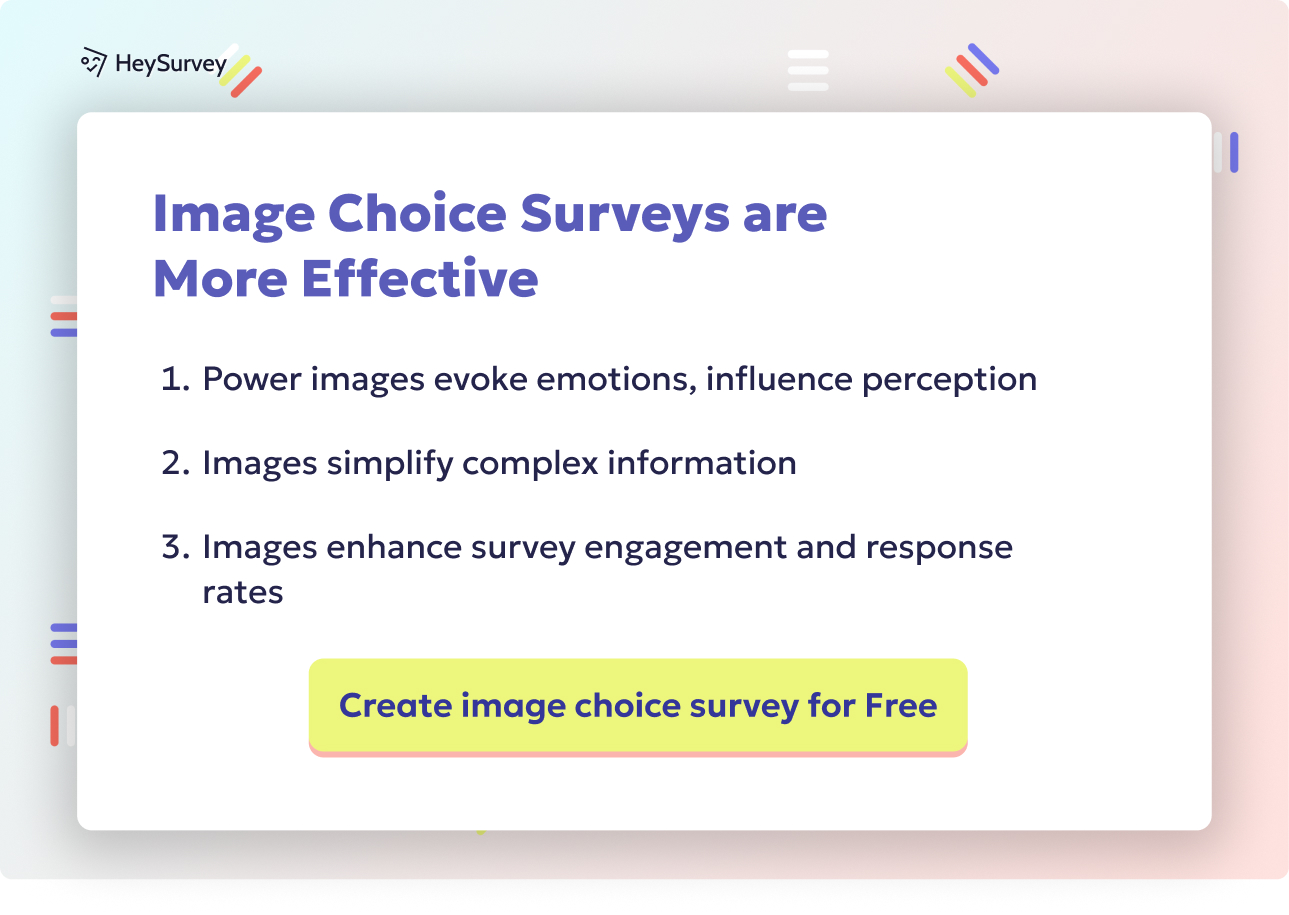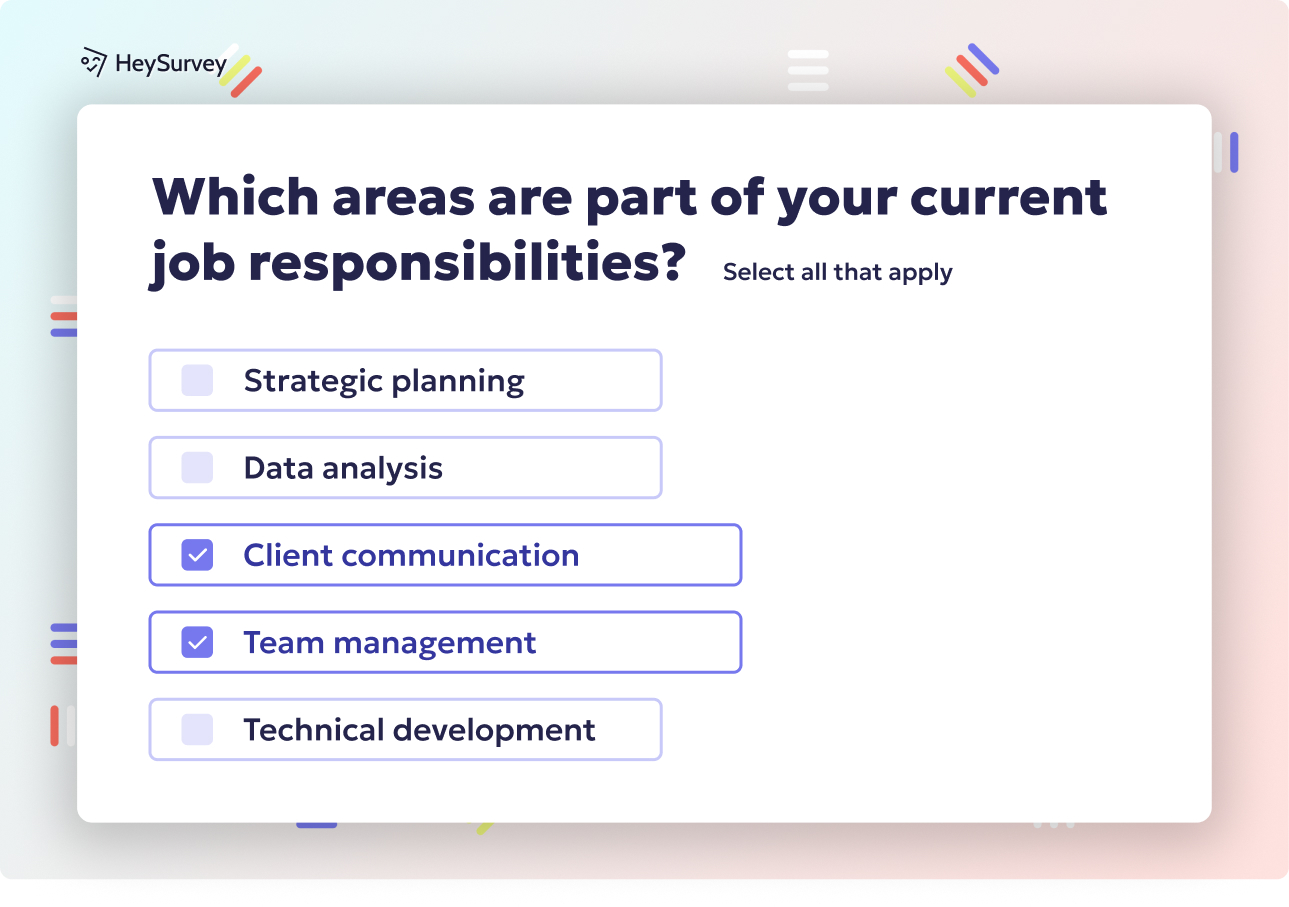31 Close Ended Survey Questions: Types, Examples & Best Practices
Explore 28 expert examples of close ended survey questions and master survey design with essential types, uses, and best practices for clear data.
Close-ended survey questions are the all-stars of modern survey design. Unlike open-ended questions that beg for essays, they ask for quick, clear-cut responses—think ticking boxes, not crafting novels. The magic of close-ended survey questions lies in how they rapidly collect quantitative feedback, making data analysis a breeze, upping response rates, and fitting right into dashboards and A/B tests. If you want to wrangle big samples or keep benchmarking efficient, these question types are your go-to tools.
Introduction to Close-Ended Survey Questions
What Are Close-Ended Survey Questions?
Close-ended survey questions are precisely structured queries that offer respondents a set of predetermined answers. Unlike their open-ended cousins, there’s no option (or need) to freestyle here—participants simply pick the answer that fits best. It’s like handing someone a menu rather than asking them to invent a recipe. This approach guarantees a steady diet of quantitative feedback, meaning responses are consistent and easy to count.
Key Benefits of Close-Ended Questions
Why do so many researchers swear by close-ended questions? For starters, they make survey design lightning fast. Responses are quick to give and even quicker to process. Here’s why surveyors love them:
- Faster Analysis: Answers fall neatly into categories—no deciphering scribbles or subjective statements.
- Higher Response Rates: Respondents face less decision fatigue, encouraging completion.
- Quantifiable Data: Numbers rule the day, powering A/B testing and snazzy benchmarking reports.
Best Use-Cases
Close-ended questions shine brightest when you need reliable, big-picture insights. They’re perfect when you need to:
- Gather large sample sizes without sacrificing accuracy
- Run A/B tests or compare results over time
- Populate dashboards with actionable metrics
- Set benchmarks for recurring check-ins
When speed and clarity are at a premium, close-ended questions take center stage for effective, efficient survey design.
Close-ended questions yield higher response rates and more consistent data, facilitating efficient analysis and comparability across respondent groups. (figpii.com)

Creating a survey with HeySurvey is as easy as pie—especially if you want to use close-ended survey questions like the ones we covered. Follow these three simple steps, and you’ll have your survey ready to roll in no time.
Step 1: Create a New Survey
- Head over to HeySurvey and click Create Survey.
- You can either start with a blank survey or pick a pre-built template made just for surveys like yours. This shortcut lets you skip the blank page and jump right into adding questions.
- Give your survey an internal name so you can easily find it later.
Step 2: Add Your Questions
- Click the Add Question button at the top of the survey editor, or find a spot between existing questions to insert new ones.
- Choose the question type you want: multiple choice, rating scale, dichotomous, and more—all the perfect types for close-ended surveys.
- Type in your question text and add answer options. Don’t forget to mark questions as required if they must be answered.
- Explore advanced settings like allowing multiple selections or adding an “Other” option to cover every possible answer.
- Use the handy drag-and-drop feature to reorder questions until your survey flows just right.
Step 3: Publish Your Survey
- When you’re happy with your questions and design, hit Preview to see how it looks to respondents.
- If everything checks out, click Publish—this makes your survey live and ready to be shared.
- Grab the survey link or get an embed code to place it on your website, social media, or anywhere you want.
Bonus Step 1: Apply Your Branding
- Open the Designer Sidebar to upload your logo and customize colors, fonts, and backgrounds.
- Create a survey that feels unmistakably yours—perfect for building trust and recognition with respondents.
Bonus Step 2: Define Settings
- Set start and end dates to control when your survey accepts responses.
- Limit the number of responses if you only want to collect a specific amount of data.
- Choose where to redirect respondents after completion, like a thank-you page or a special offer.
- Turn on options to let respondents view results when appropriate, great for transparency.
Bonus Step 3: Add Branching Logic
- Use branching to tailor the journey based on respondents’ answers.
- Send users down different paths—maybe skipping irrelevant questions or diving deeper where needed.
- This advanced trick makes your survey feel personal without sacrificing simplicity.
Ready to get started? Click the button below to open your template and see how quickly you can build a polished, engaging close-ended survey with HeySurvey!
Dichotomous (Yes/No) Questions
Why and When to Use
Dichotomous questions boil every response down to two choices: yes or no. They don’t mess around. If you need to kick off a logic path or quickly filter folks into segments, these questions do it in a snap. The simplicity makes them the king of quick screens and qualification logic.
You’ll reach for these in situations such as:
- Eligibility Filters: Weed out ineligible participants right at the start.
- Satisfaction Checks: Gauge overall happiness with a service or product.
- Compliance Confirmations: Secure simple, binary replies to important statements.
The binary design means results are easy to tally and compare. Plus, respondents love the swift, no-nonsense experience. In a crowded survey design, these are the traffic cops that keep things moving.
5 Sample Questions
Have you purchased from us in the last 30 days?
Did our support team resolve your issue today?
Would you recommend our app to a friend?
Are you 18 years of age or older?
Do you agree to receive email updates?
These question types help with rapid triage, sorting participants into the right group or simply getting a straight answer. For sharp segmentation and speed, dichotomous questions never disappoint.
Dichotomous questions are efficient for collecting binary data but may oversimplify complex issues, potentially leading to biased or inaccurate results. (marketing91.com)
Multiple Choice Single-Select Questions
Why and When to Use
Multiple choice single-select questions allow respondents to pick just one answer from a predefined list. They’re fantastic when you need to force a decision rather than let respondents hedge their bets. Use these questions when you want clarity and concise quantitative feedback.
Best situations include:
- Demographic Fields: Break out age brackets or professions.
- Feature Prioritization: Pinpoint which product feature means most to users.
- Channel Preference: Discover the one channel customers flock to most.
With single-select, you sidestep ambiguity and segment customer profiles neatly. In big surveys, keeping choices clear ensures meaningful, actionable results every time.
5 Sample Questions
Which age bracket do you fall into?
What is your primary reason for visiting our website today?
Which subscription plan are you currently on?
How did you first hear about us?
What operating system do you use most often?
Each question forces respondents to weigh their options and choose the one that best fits. In survey design, this powers crisp segmentation, making your data sing in neat, harmonized groups. Single-select’s power lies in simple decisions leading to richer insights.
Multiple Choice Multi-Select (Checkbox) Questions
Why and When to Use
Sometimes, life doesn’t fit into neat boxes—so why should your survey answers? Multiple choice multi-select (checkbox) questions let respondents select as many options as apply. If you’re after the full picture of someone’s usage, preferences, or pain points, you’ll need this approach.
Scenarios where these shine include:
- Feature Usage: Capture everything in your product that gets regular action.
- Pain Points: Uncover all obstacles a user faces at work or with a tool.
- Content Topics: Reveal every subject that interests your audience.
- Desired Improvements: Learn the full range of user wishes.
Multi-select questions are like open-ended questions’ organized cousins. They allow for nuanced, yet structured, quantitative feedback. This flexibility leads to a surprising depth of insight—without creating an analysis headache.
5 Sample Questions
Which of the following features do you use at least weekly?
Select the social media platforms you actively post on.
Which challenges hinder your daily workflow? (Select all that apply.)
What payment methods would you like us to add?
Which product benefits influenced your purchase?
When respondents can check all that apply, you see the breadth of their engagements and concerns. In robust survey design, multi-select’s value is all about covering every relevant angle—without sacrificing order.
Research indicates that forced-choice questions yield more accurate results than select-all-that-apply formats, as respondents are more likely to endorse options when presented individually. (pewresearch.org)
Rating Scale (Likert) Questions
Why and When to Use
Rating scale (Likert) questions measure how strongly respondents agree, disagree, or otherwise feel about a statement. These scales can be numeric—usually 1 to 5 or 1 to 7—or descriptive, ranging from “Strongly Disagree” to “Strongly Agree.” If you need to track changes, spot trends, or take the temperature of group feeling, rating scales are the way to go.
These are ideal for:
- Tracking sentiment: See how opinions or satisfaction levels shift over time.
- Employee engagement: Quantify attitudes toward company climate or leadership.
- Product feedback: Capture how users feel about features or experiences.
The best part? Quantitative feedback comes summarized, usually as an average or distribution. When you want a fast snapshot of feeling, Likert scales deliver clear, measurable results.
5 Sample Questions
How satisfied are you with our delivery speed? (1–5)
Please rate your agreement: ‘The interface is easy to navigate.’
How frequently do you use the app? (Never to Always)
Rate the value for money of our service.
How confident are you in recommending us? (Not at all to Extremely)
Every answer fits neatly onto a scale, letting you compare and track trends with ease. In survey design, rating scale questions strike the perfect balance between detail and simplicity—always delivering data you can trust.
Semantic Differential Scale Questions
Why and When to Use
At times, standard scales just don’t capture subtle shifts in perception—that’s when semantic differential scales step in. These questions ask participants to rate something between two opposite adjectives, such as “outdated” and “modern.” The magic here is in the nuanced quantitative feedback these scales provide, especially around branding and user experience.
Choose these when you want to:
- Test logos: See if a design leans more fun or serious, youthful or mature.
- Compare user experiences: Find out how your product stacks up against the competition.
- Uncover positioning: Get a read on where your brand falls in the minds of customers.
Semantic differentials help tease out subtle perceptions, revealing shifts open-ended questions might miss. The structure keeps answers consistent and deeply insightful.
5 Sample Questions
Please rate our website: Difficult ⬜⬜⬜⬜⬜ Easy
Our brand feels: Outdated ⬜⬜⬜⬜⬜ Modern
The checkout process is: Complicated ⬜⬜⬜⬜⬜ Simple
This product seems: Low quality ⬜⬜⬜⬜⬜ High quality
Customer support was: Unhelpful ⬜⬜⬜⬜⬜ Helpful
These bipolar scales map perception with pinpoint accuracy—a dream for marketers or UX teams. In the landscape of survey design, semantic differential scales illuminate the shades between “good” and “bad” with eye-opening clarity.
Ranking Questions
Why and When to Use
Sometimes, it’s not enough to know which features matter. You have to know which matter most. That’s where ranking questions come in—they force respondents to establish a hierarchy by ordering items by preference. If you want to dig into what people actually value, not just what they like, ranking is your secret weapon.
Great for:
- Feature road-mapping: Set priorities for development.
- Content planning: Uncover which ideas pack the most punch.
- Pricing bundle creation: Find out what makes a bundle irresistible.
Ranking reveals the true order of preference, giving you sharper quantitative feedback than simple selection ever could. It turns fuzzy “likes” into decisive guidance for action.
5 Sample Questions
Rank these features in order of importance.
Order the following benefits from most to least valuable.
Prioritize these improvements for our next release.
Rank the subscription perks from #1 (most) to #5 (least) appealing.
Arrange these communication channels by your preferred contact method.
Ranking is brutally honest. Respondents can’t pick everything—they have to choose, making your data more actionable. As a question type in survey design, it clears the fog around customer priorities, revealing the map you need to move forward.
Matrix/Grid Questions
Why and When to Use
If you need a cornucopia of feedback without a mile-long survey, matrix/grid questions have your back. Here, respondents rate multiple items on the same scale in a single tidy table. This structure is a lifesaver for spotting patterns and summarizing a big topic in a compact, easy-to-analyze way.
Matrix questions are tailor-made for:
- Employee engagement: Score attitudes on a range of workplace aspects.
- Course evaluations: Judge multiple parts of a learning experience at once.
- Product attribute scoring: See which product attributes rise or fall together.
The secret sauce here is the ability to collect loads of quantitative feedback in one elegant place. You get a bird’s-eye view—and can swoop down on patterns at a glance.
5 Sample Questions (Rows in a Matrix)
Ease of use
Visual appeal
Page load speed
Content relevance
Overall satisfaction
Respondents rate each item across a consistent scale, speeding up completion and making analysis a breeze. Matrix questions keep your survey design streamlined while delivering massively efficient insights—form and function, finally in harmony.
Best Practices, Dos and Don’ts for Close-Ended Questions
Dos for Close-Ended Survey Questions
Getting the most from your close-ended question types takes a pinch of science and a dash of art. Here are some golden rules to stick to:
- Keep wording neutral to avoid nudging answers one way or another.
- Offer exhaustive & mutually exclusive options so every respondent finds the right fit.
- Pre-test your scales with a small audience before rolling out the survey.
- Randomize answer orders (where appropriate) to smash order bias in longer lists.
- Provide “Other” or “Not Applicable” choices to catch outliers or ensure inclusivity.
Neutral, clear options mean data you can trust and act on.
Don’ts for Close-Ended Survey Questions
Let’s talk about the pitfalls you’ll want to sidestep:
- Don’t overlap answer ranges (e.g., “11-20” and “20-30”).
- Don’t cram too many items in one grid—respondent fatigue is real.
- Don’t use double-barreled statements (e.g., “How satisfied are you with our price and quality?”).
- Don’t neglect mobile formatting—what looks great on desktop could be a nightmare on phones.
- Don’t forget to tie questions to clear objectives or you’ll end up with data you can’t use.
These slips lead to messy, unreliable data, so heed the warnings.
More Survey Tips
Want to dive deeper? Check out related guides on survey design or how to spot and fix questionnaire bias in your next study.
FAQ – Close-Ended Survey Questions
Q: What’s the main difference between close-ended and open-ended questions?
A: Close-ended questions offer predefined answers. Open-ended questions let respondents reply in their own words.
Q: Are close-ended questions always better?
A: Not always. They’re great for fast, quantifiable data, but open-ended questions dig deeper for context.
Q: Can I use both types in one survey?
A: Yes! Mixing both gives you rich data and actionable numbers.
Q: How do I design a great close-ended question?
A: Keep it clear, focused, and matched to your objective—and always test your survey before launch.
Q: Why is “Other” important in close-ended design?
A: It captures outlier or unanticipated answers and makes your survey inclusive.
Conclusion
Close-ended survey questions are the trusty workhorses of meaningful, measurable research. They make surveys faster to answer, easier to analyze, and ensure every response is neatly categorized. So next time you’re plotting a brilliant survey design, reach for these question types—you’ll get the crisp, actionable quantitative feedback you’ve been craving. Turns out, a good question really is worth a thousand data points!
Related Question Design Surveys

29 Quantitative Survey Research Questions Example for Success
Explore 25+ quantitative survey research questions example with clear explanations and tips for c...

32 Good Survey Question to Boost Your Data Quality
Discover how to craft good survey questions with 30 sample questions across 8 types for better da...

31 Survey Question Mistakes You Need to Avoid Today
Discover 25 common survey questions mistakes with real examples and expert tips to craft clear, u...

